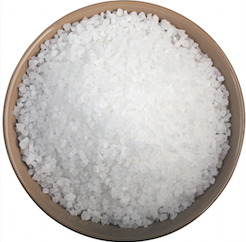
Slashing Sodium
By Erin Wegner, BS and Kelsie Knerr, RD LD
Ever wonder why you can’t stop thinking about a specific food, like a juicy cheeseburger or fries? Your body craves what you eat, so the more you eat certain foods, the more you potentially crave them. Often we crave foods that are laden with fat, sugar and sodium.
You may think of table salt when you think of sodium, but what is it, really? Sodium is an essential nutrient. Your body doesn’t need a lot of sodium, but it serves many functions, one of which is to maintain blood pressure.
Most adults should strive to eat less than 2,300 mg or 1,500 mg of sodium per day, depending on age and other individual characteristics. While nearly everyone benefits from reducing their sodium intake, African Americans; individuals with hypertension, diabetes or chronic kidney disease; and individuals age 51 and older tend to be more responsive to the blood pressure-raising effects of sodium. Therefore, they should reduce their intake to 1,500 mg per day.
Sounds easy, right? But the average American consumes about 3,400 mg of sodium every day. Then what’s the problem?
Because sodium naturally bonds to water, eating excess sodium pulls more water into your bloodstream. When your body holds on to more water, your heart may have to work harder to pump blood throughout your, body which may increase your blood pressure; this is especially noticeable in people who are more sensitive to sodium.
Why do we consume so much excess sodium? It’s not all your fault; more than 75 percent of the sodium in the average American diet is hidden in processed, packaged, and prepared foods from restaurants. Manufacturers use sodium for flavor, preservation, texture and color. This explains why deli meats, canned soups, salad dressings, pasta, bread and cereals tend to be packed with sodium. Remember, when you put other people in charge of the way your food is made, they aren’t always going to make your health their top priority.
With one in three Americans having high blood pressure, this is a serious concern, but fortunately it’s something you can monitor and reduce.
A good place to start is reading food labels and tracking your daily sodium intake. See if cutting back on high sodium items lessens your cravings for those foods.
Along with saying “No!” to higher-sodium options, say “Yes!” to more fruits and veggies (naturally sodium-free) and cooking more at home, where you can have more control over the ingredients you use.
If you have more questions about sodium or setting up a diet that’s right for you, you can make an appointment with one of our WELLAWARE registered dietitians by calling 573-815-3870.